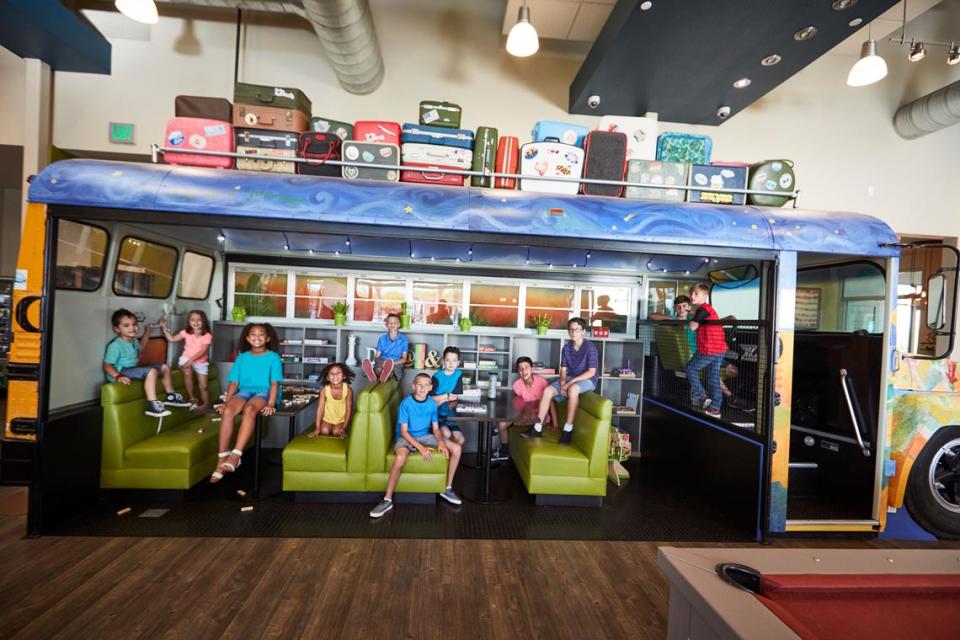Homebuyers are demanding one amenity right now

Homebuyers are trading in their country club memberships for well-trodden trails. In a new John Burns Real Estate Consulting podcast, principal Ken Perlman lays out how today’s most successful amenities at new developments, mostly master plan communities, revolve around healthy living.
“The amenities we’re seeing today follow a theme — health. That includes physical health, mental health, food and social interaction,” he said.
Perlman discussed how walking and biking trails, among other offerings, are replacing opulent offerings like clubhouses, golf courses and gates.
“About 68% of buyers want a variety of hiking trails inside the community,” he said. “Anything that’s just big, contrived and overprogrammed [is out]. You can’t force people to do anything. Clubhouses don’t have to be massive. People want intimacy and to be able to socialize when they want to.”
The shift in master plan development prioritizes holistic healthy living — not just exercising in a bare bones gym. Certain communities even offer terrain and obstacles ratings and you can download maps on your phone with boot camp offerings along the way.
The focus on food
Of course, this active lifestyle also brings farm-to-table into the mainstream consciousness. Thirty-five percent of households grow vegetables in their own backyard. That’s a 17% increase in the past five years, according to the National Gardening Association. And builders are catering to this increased appetite by building so-called agrihoods, or residences built around community farms.
Miralon, a 300-acre master plan community in Palm Springs, boasts 1,150 homes that was built to house a golf course. Now it’s covered with olive trees that will produce olive oil on-site that residents can enjoy. The olive grove as a centerpiece reflects the changing tastes of homebuyers.
“Healthy living and eating has a core focus on community gardens,” said Perlman. Harvest by Hillwood in Argyle, Texas offers a wide range of gardens for residents to grow their own food. Its slogan is “a perfect community to put down roots.”
The Willowsford Conservancy and Farm in Ashburn, Virginia offers programs about growing food and healthy eating. The community also has the Willowsford Kitchen with an in-house chef who brings together the farm and healthy eating, according to Perlman.
Similarly, Victory at Verrado’s Big Patio in Buckeye, Arizona has a demonstration kitchen for adults and boasts a physical Giving Tree, which has become a popular outside venue for charity events.
‘You don’t have to have everything programmed’
Young homebuyers, in particular, are forgoing structured amenities, and want the freedom to create their own sense of community.
“Why you choose a house, a master plan community, it’s really about social interaction. It’s about people coming together and that creates the amenity. That’s what people want most out of their home,” said Perlman.

This could make the lives of developers easier. Rather than focusing on sprawling cost- and time-intensive projects, homeowners seem to be returning to the simple nature of fun.
“Picnic tables, giant Jenga games, half-court basketball and farmer’s markets invigorate spaces. People like trails, open spaces and smaller parks. You don’t have to have everything programmed,” he added.
Melody Hahm is a senior writer at Yahoo Finance, covering entrepreneurship, technology and real estate. Follow her on Twitter @melodyhahm.
Read more:
Anaheim wants to be the Disneyland of beer
What it’s like to glamp on New York City’s Rockaway peninsula
26-year-old launches Instagram-fueled fast fashion brand
Inside the exclusive supper club in a 1-bedroom NYC apartment
A father-son duo is revolutionizing this $20B industry one BBQ at a time
Women’s-only club The Wing opens its doors for a special occasion
25-year-old’s startup is making fast fashion even faster

 Yahoo Finance
Yahoo Finance 